Nurses Narratives: Gertrude Marion Doherty
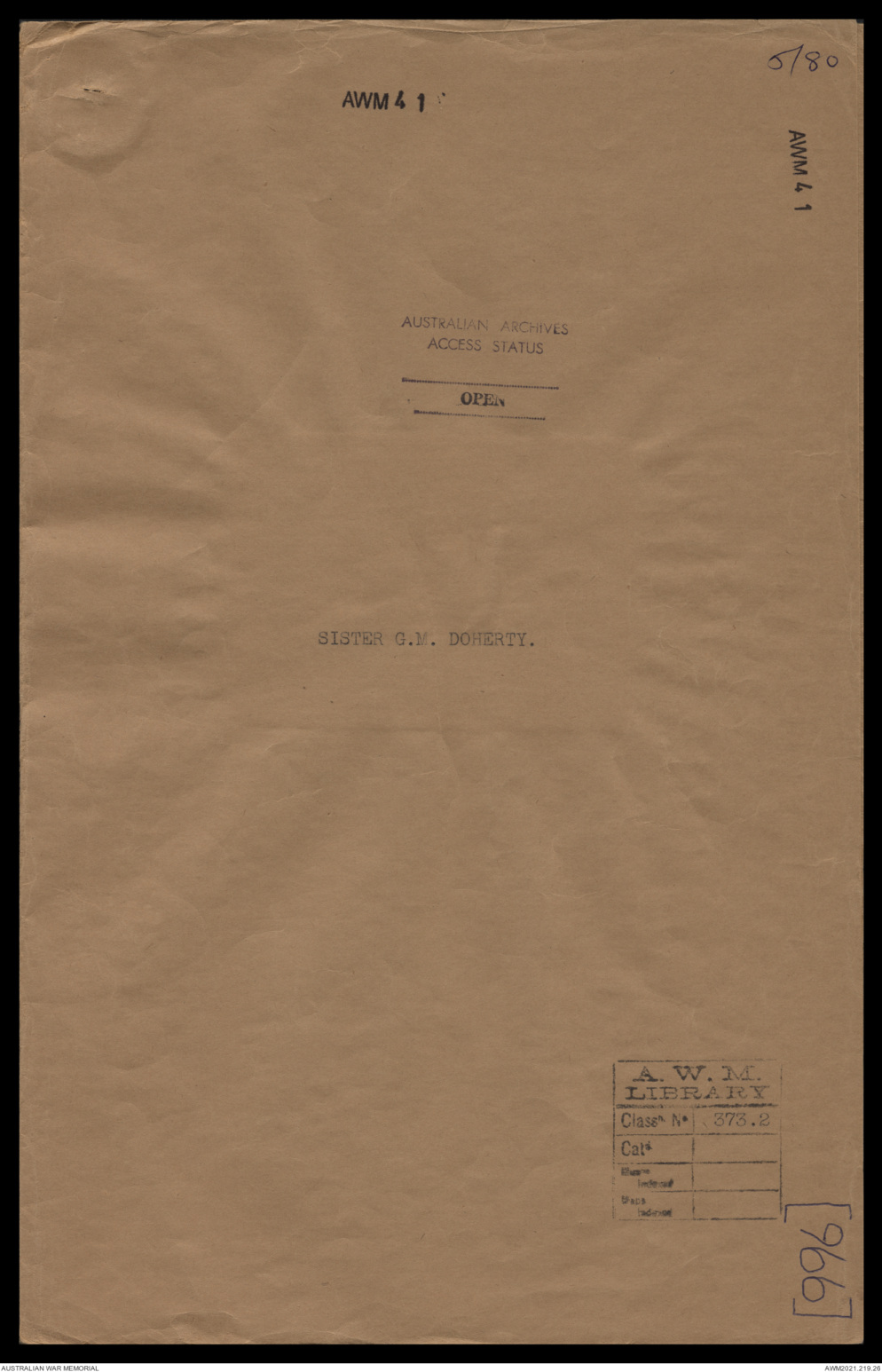
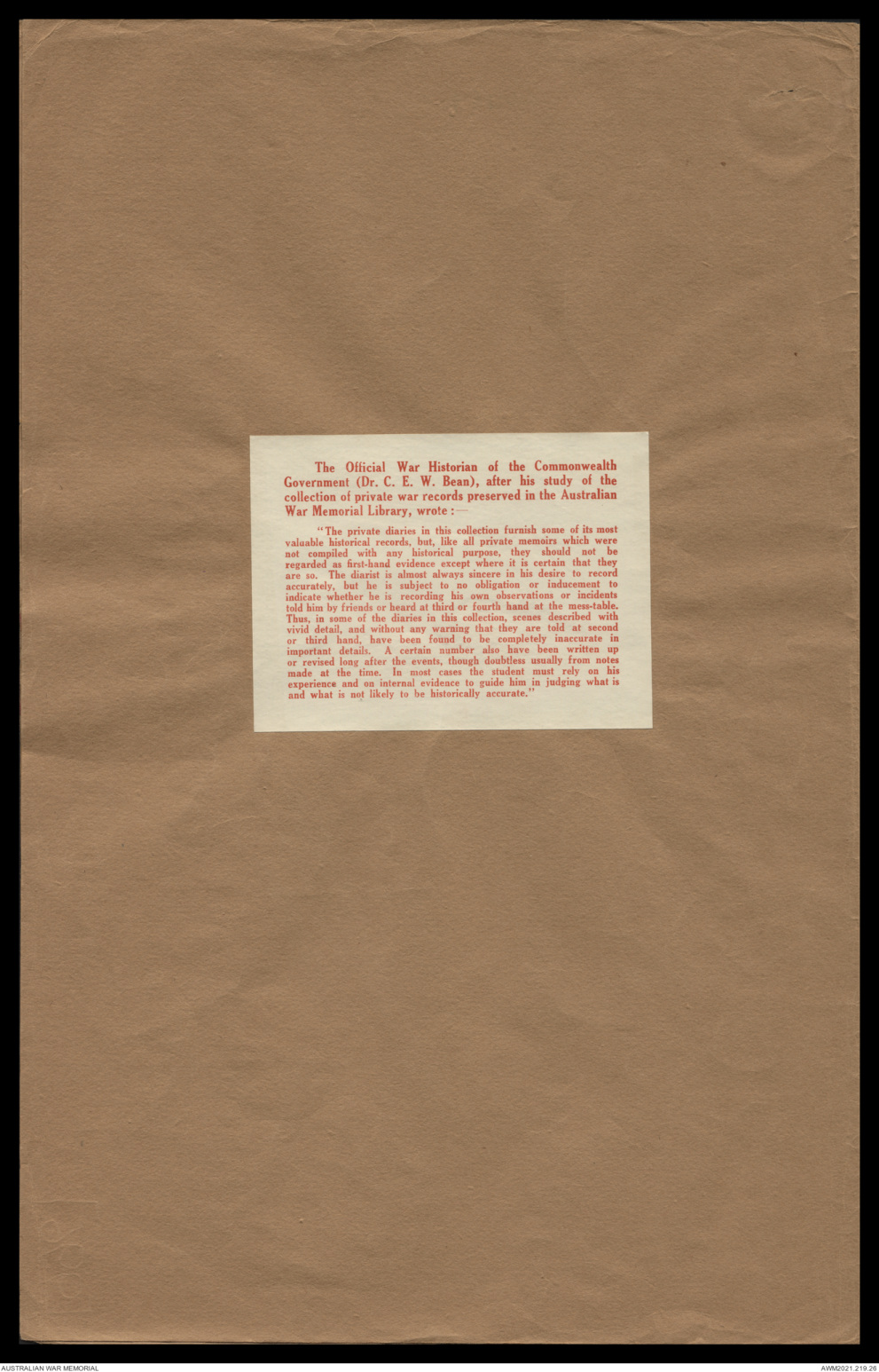
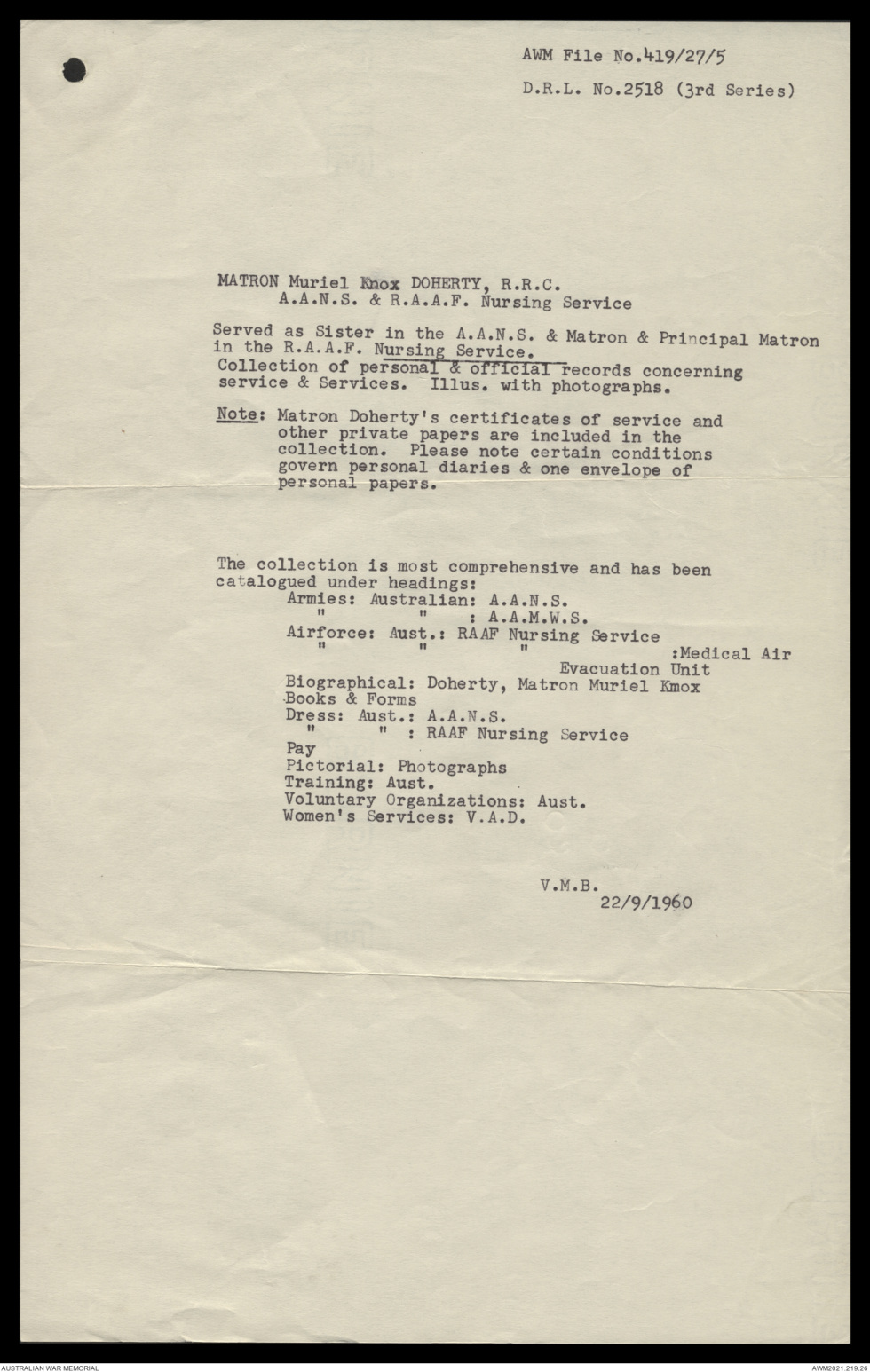
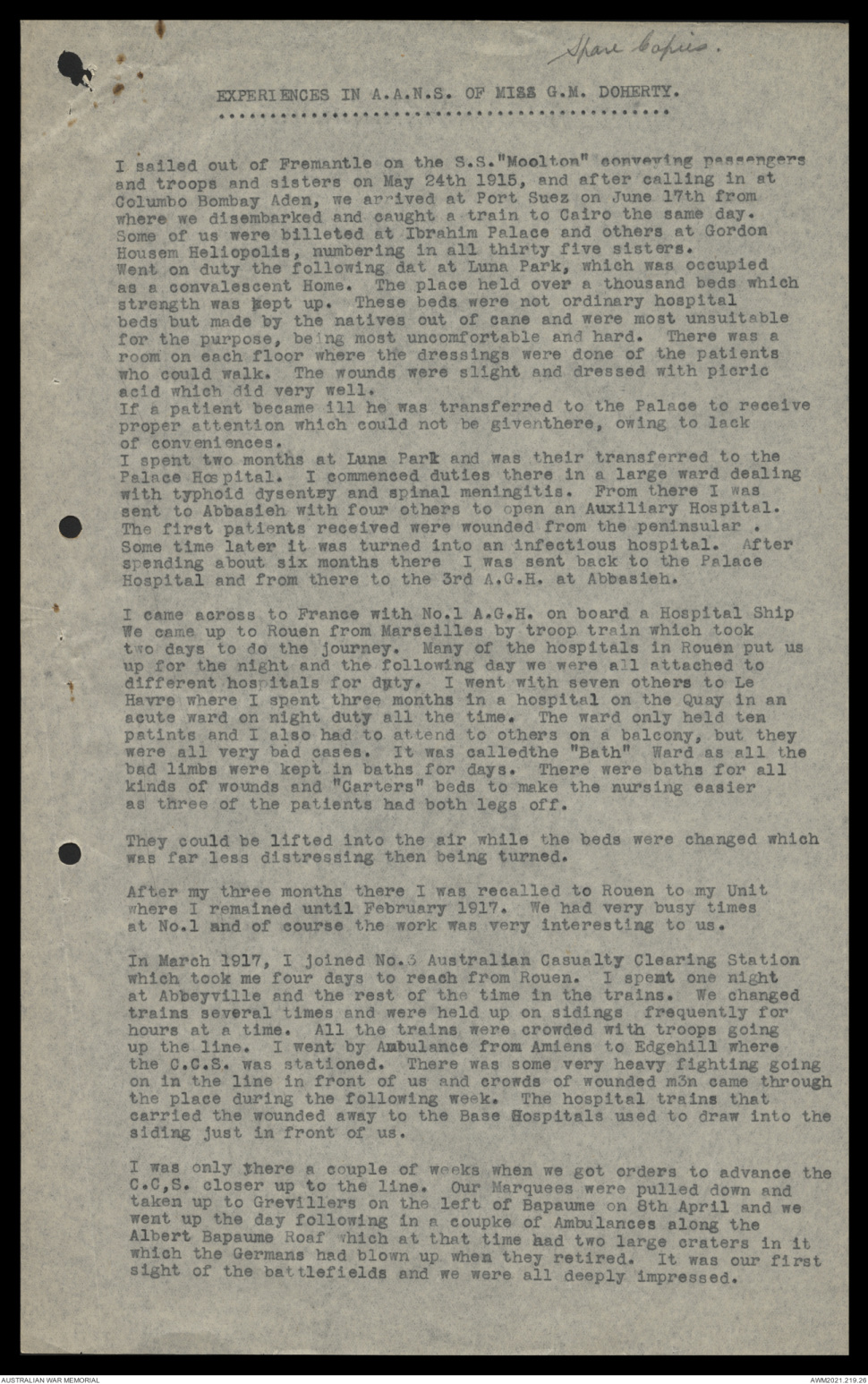
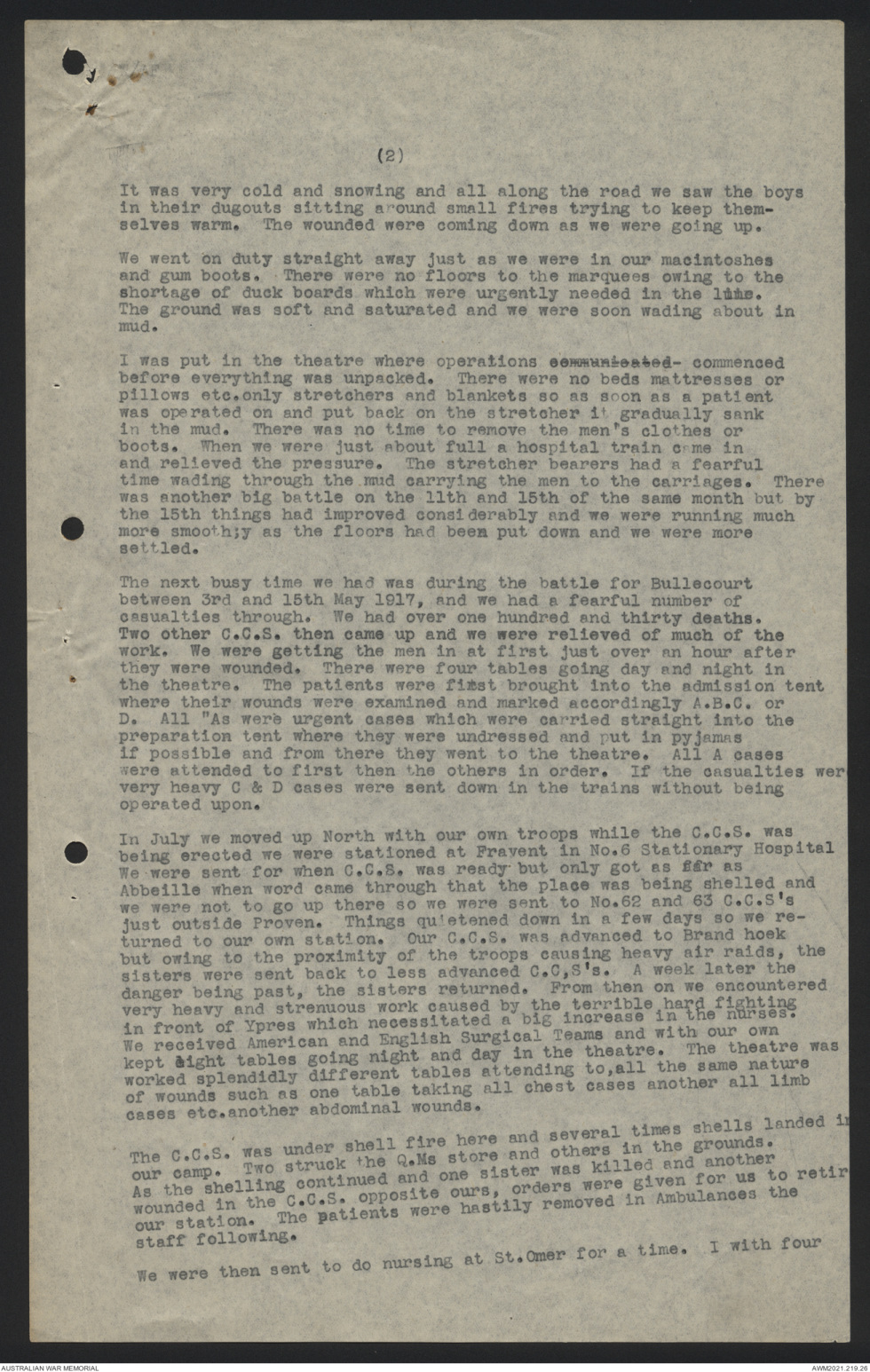
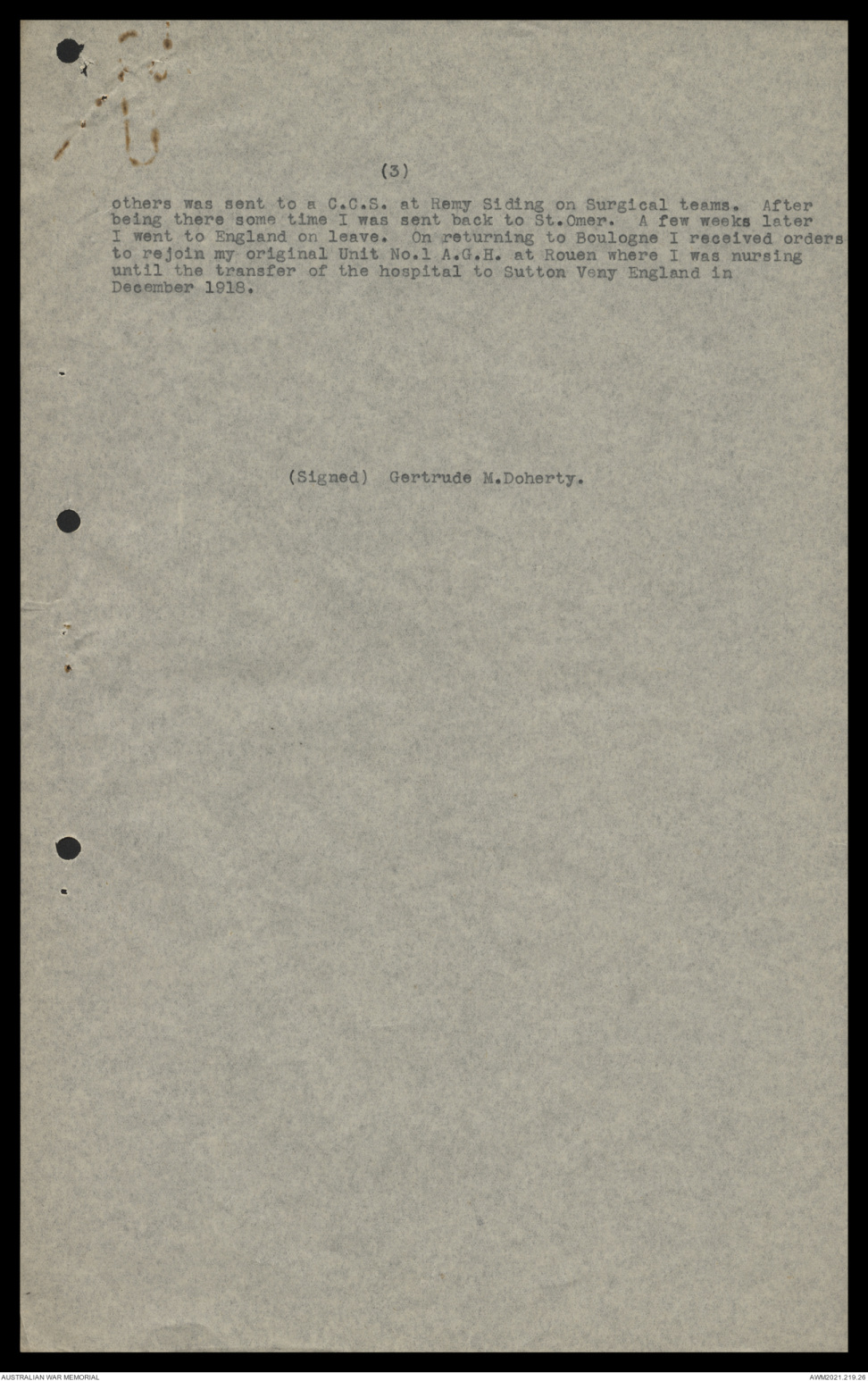
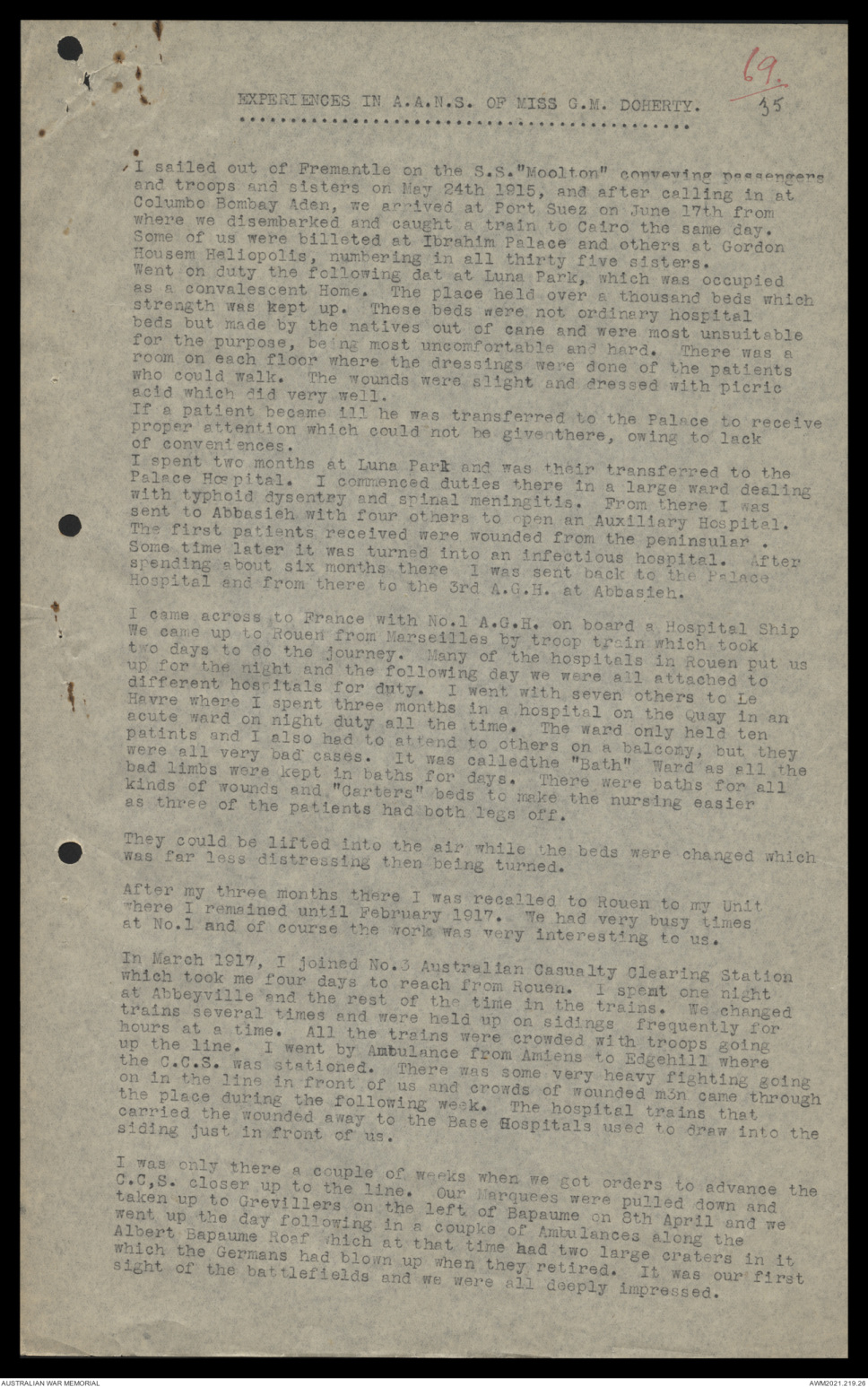
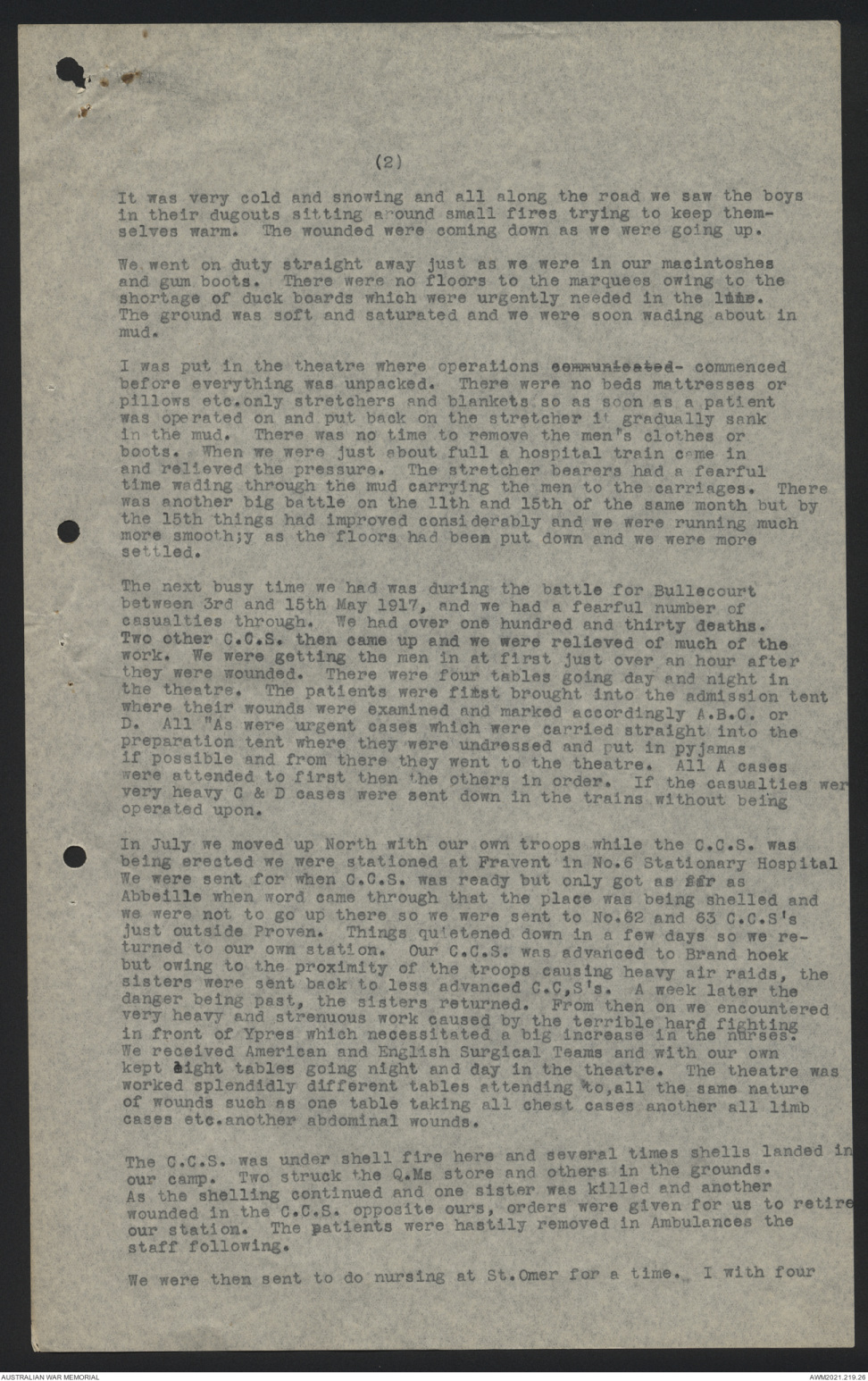
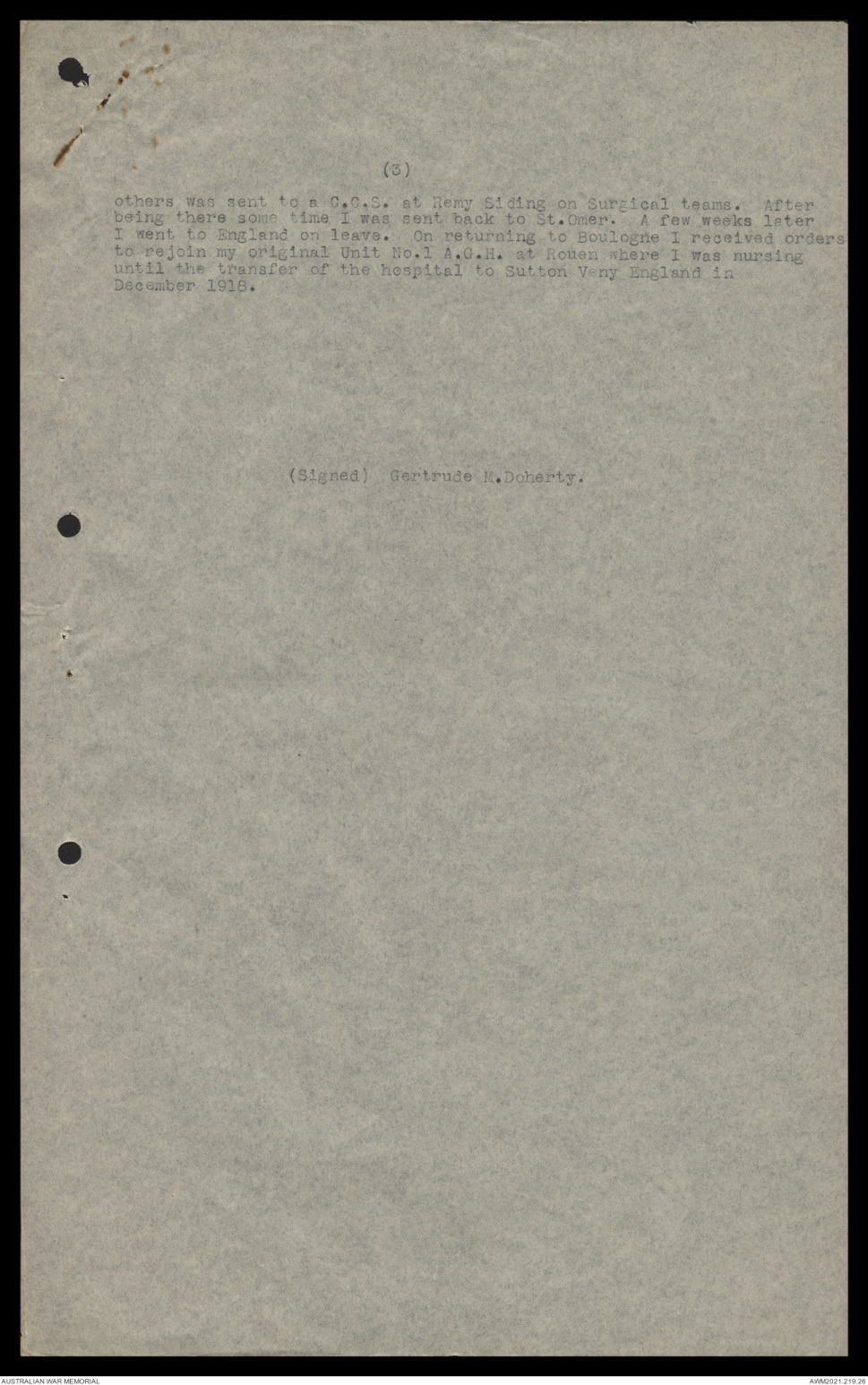
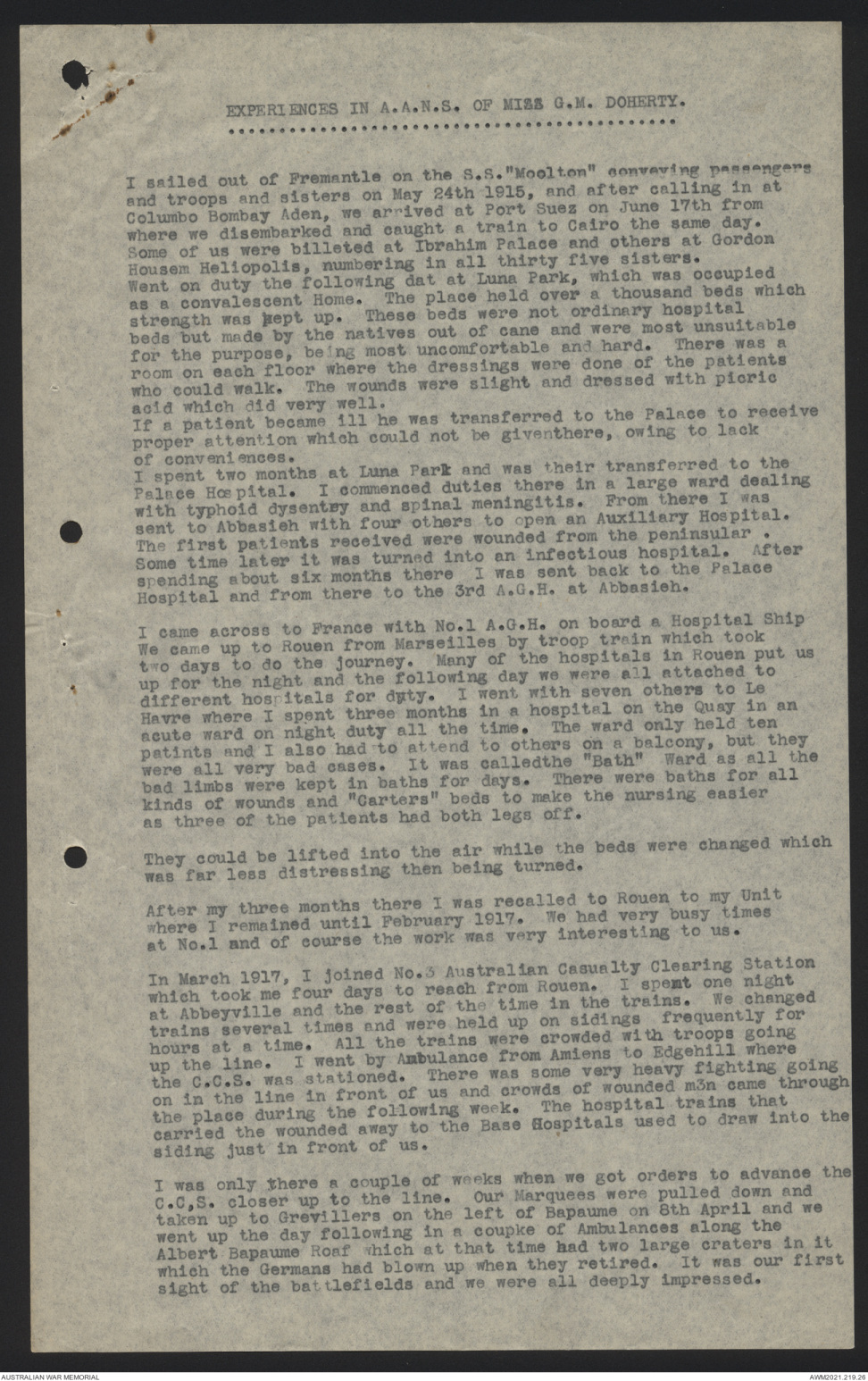
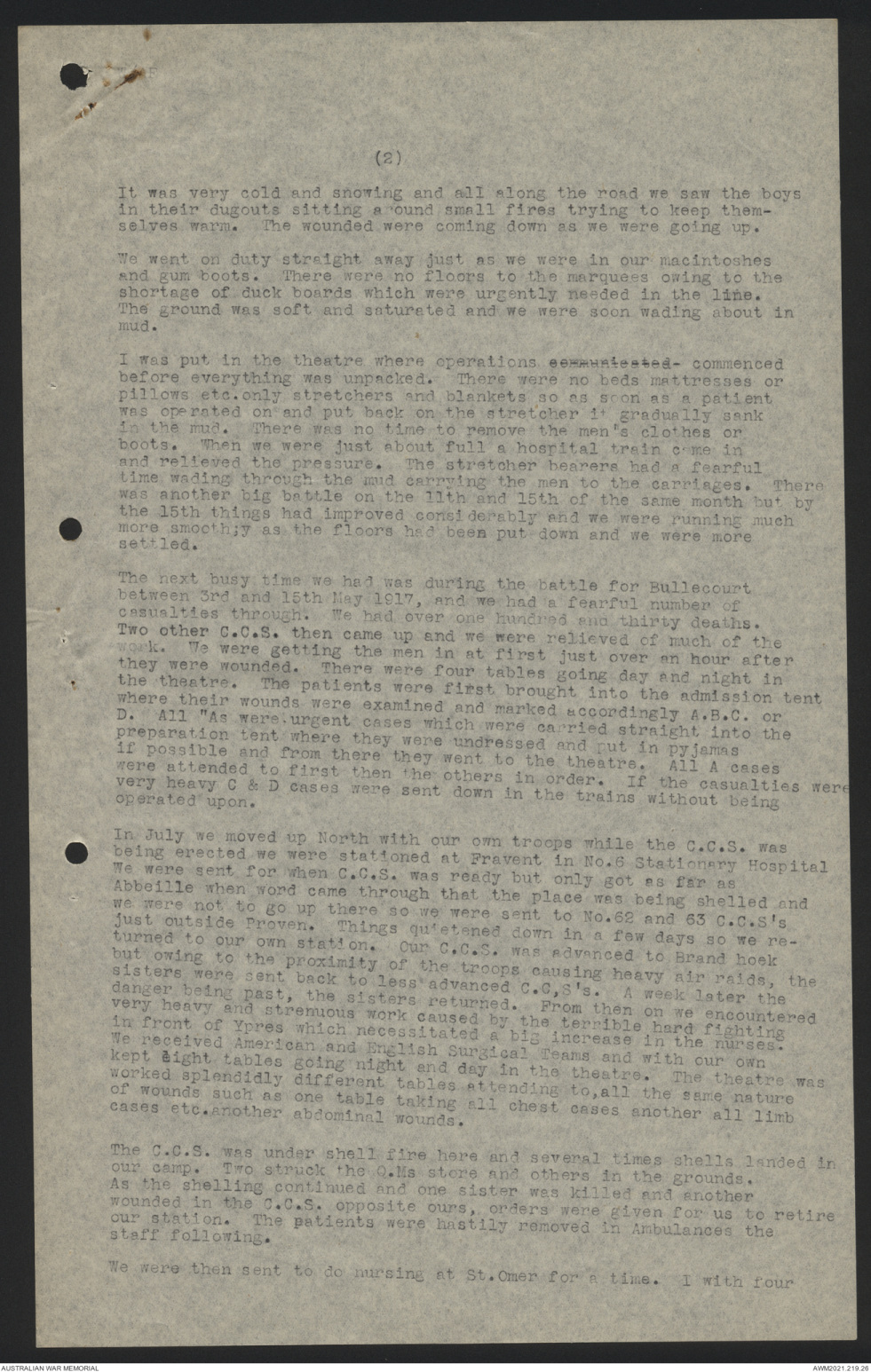
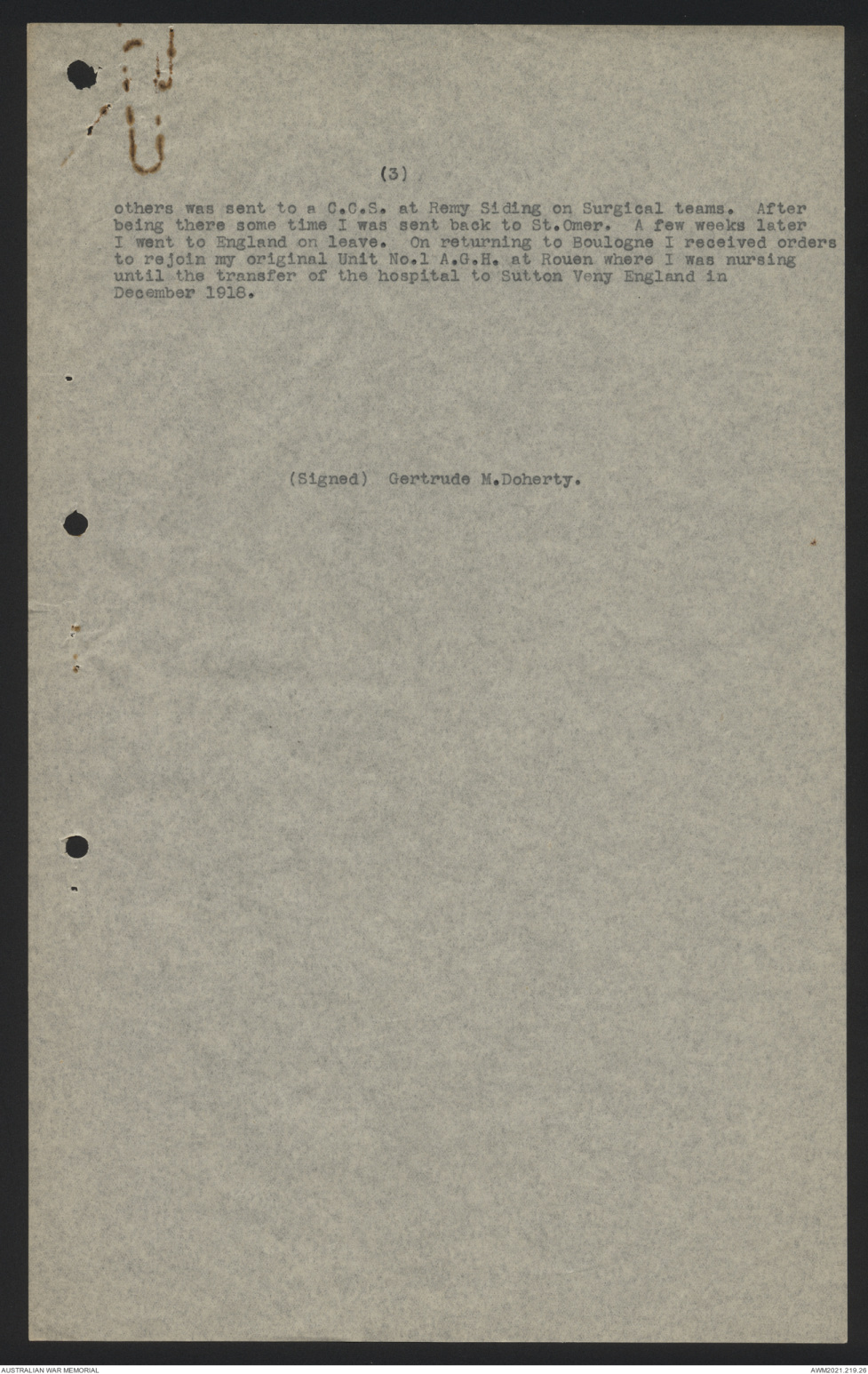
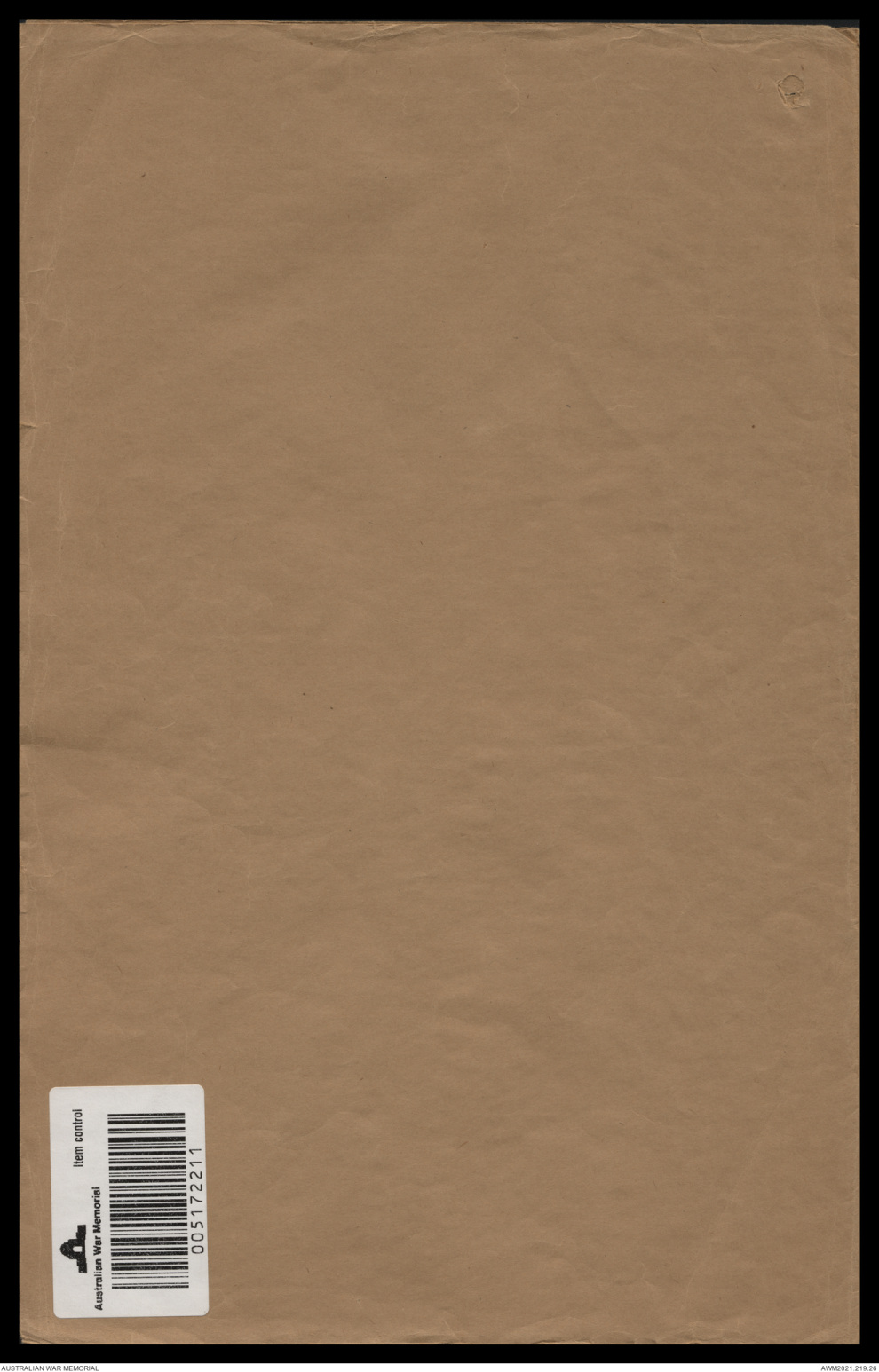
AWM 41
AUSTRALIAN ARCHIVES
ACCESS STATUS
OPEN
SISTER G.M. DOHERTY.
The Official War Historian of the Commonwealth
Government (Dr. C. E. W. Bean), after his study of the
collection of private war records preserved in the Australian
War Memorial Library, wrote:-
"The private diaries in this collection furnish some of its most
valuable historical records, but, like all private memoirs which were
not compiled with any historical purpose, they should not be
regarded as first-hand evidence except where it is certain that they
are so. The diarist is almost always sincere in his desire to record
accurately, but he is subject to no obligation or inducement to
indicate whether he is recording his own observations or incidents
told him by friends or heard at third or fourth hand at the mess-table.
Thus, in some of the diaries in this collection, scenes described with
vivid detail, and without any warning that they are told at second
or third hand, have been found to be completely inaccurate in
important details. A certain number also have been written up
or revised long after the events, though doubtless usually from notes
made at the time. In most cases the student must rely on his
experience and on internal evidence to guide him in judging what is
and what is not likely to be historically accurate".
AWM File No.419/27/5
D.R.L. No.2518 (3rd Series)
MATRON Muriel Knox DOHERTY, R.R.C.
A.A.N.S. & R.A.A.F. Nursing Service
Served as Sister in the A.A.N.S. & Matron & Principal Matron
in the R.A.A.F. Nursing Service.
Collection of personal & official records concerning
service & Services. Illus. with photographs.
Note: Matron Doherty's certificates of service and
other private papers are included in the
collection. Please note certain conditions
govern personal diaries & one envelope of
personal papers.
The collection is most comprehensive and has been
catalogued under headings:
Armies: Australian: A.A.N.S.
" " : A.A.M.W.S.
Airforce: Aust. : RAAF Nursing Service
" " " : Medical Air
Evacuation Unit
Biographical: Doherty, Matron Muriel Kmox
Books & Forms
Dress: Aust.: A.A.N.S.
" " : RAAF Nursing Service
Pay
Pictorial: Photographs
Training: Aust .
Voluntary Organizations: Aust .
Women's Services: V.A.D.
V.M.B.
22/9/1960
[*Spare Copies*]
EXPERIENCES IN A.A.N.S OF MISS G.M. DOHERTY.
I sailed out of Fremantle on the S.S. "Moolton" conveying passengers
and troops and sisters on May 24th 1915, and after calling in at
Columbo Bombay Aden, we arrived at Port Suez on June 17th from
where we disembarked and caught a train to Cairo the same day.
Some of us were billeted at Ibrahim Palace and others at Gordon
Housem Heliopolis, numbering in all thirty five sisters.
Went on duty the following dat at Luna Park, which was occupied
as a convalescent Home. The place held over a thousand beds which
strength was kept up. These beds were not ordinary hospital
beds but made by the natives out of cane and were most unsuitable
for the purpose, being most uncomfortable and hard. There was a
room on each floor where the dressings were done of the patients
who could walk. The wounds were slight and dressed with picric
acid which did very well.
If a patient became ill he was transferred to the Palace to receive
proper attention which could not be given there, owing to lack
of conveniences.
I spent two months at Luna Park and was their transferred to the
Palace Hospital. I commenced duties there in a large ward dealing
with typhoid dysentry and spinal meningitis. From there I was
sent to Abbasieh with four others to open an Auxiliary Hospital.
The first patients received were wounded from the peninsular .
Some time later it was turned into an infectious hospital. After
spending about six months there I was sent back to the Palace
Hospital and from there to the 3rd A.G.H. at Abbasieh.
I came across to France with No.1 A.G.H. on board a Hospital Ship
We came up to Rouen from Marseilles by troop train which took
two days to do the journey. Many of the hospitals in Rouen put us
up for the night and the following day we were all attached to
different hospitals for duty. I went with seven others to Le
Havre where I spent three months in a hospital on the Quay in an
acute ward on night duty all the time. The ward only held ten
patints and I also had to attend to others on a balcony, but they
were all very bad cases. It was calledthe "Bath" Ward as all the
bad limbs were kept in baths for days. There were baths for all
kinds of wounds and "Carters" beds to make the nursing easier
as three of the patients had both legs off.
They could be lifted into the air while the beds were changed which
was far less distressing then being turned.
After my three months there I was recalled to Rouen to my Unit
where I remained until February 1917. We had very busy times
at No.1 and of course the work was very interesting to us.
In March 1917, I joined No. 3 Australian Casualty Clearing Station
which took me four days to reach from Rouen. I spent one night
at Abbeyville and the rest of the time in the trains. We changed
trains several times and were held up on sidings frequently for
hours at a time. All the trains were crowded with troops going
up the line. I went by Ambulance from Amiens to Edgehill where
the C.C.S. was stationed. There was some very heavy fighting going
on in the line in front of us and crowds of wounded m3n came through
the place during the following week. The hospital trains that
carried the wounded away to the Base Hospitals used to draw into the
siding just in front of us.
I was only there a couple of weeks when we got orders to advance the
C.C,S. closer up to the line. Our Marquees were pulled down and
taken up to Grevillers on the left of Bapaume on 8th April and we
went up the day following in a coupke of Ambulances along the
Albert Bapaume Roaf which at that time had two large craters in it
which the Germans had blown up when they retired. It was our first
sight of the battlefields and we were all deeply impressed.
(2)
It was very cold and snowing and all along the road we saw the boys
in their dugouts sitting around small fires trying to keep them-
selves warm. The wounded were coming down as we were going up.
We went on duty straight away just as we were in our macintoshes
and gum boots. There were no floors to the marquees owing to the
shortage of duck boards which were urgently needed in the line.
The ground was soft and saturated and we were soon wading about in
mud.
I was put in the theatre where operations communicated- commenced
before everything was unpacked. There were no beds mattresses or
pillows etc.only stretchers and blankets so as soon as a patient
was operated on and put back on the stretcher it gradually sank
in the mud. There was no time to remove the men's clothes or
boots. When we were just about full a hospital train came in
and relieved the pressure. The stretcher bearers had a fearful
time wading through the mud carrying the men to the carriages. There
was another big battle on the 11th and 15th of the same month but by
the 15th things had improved consi derably and we were running much
more smooth;y as the floors had been put down and we were more
settled.
The next busy time we had was during the battle for Bullecourt
between 3rd and 15th May 1917, and we had a fearful number of
casualties through. We had over one hundred and thirty deaths.
Two other C.C.S. then came up and we were relieved of much of the
work. We were getting the men in at first just over an hour after
they were wounded. There were four tables going day and night in
the theatre. The patients were first brought into the admission tent
where their wounds were examined and marked accordingly A.B.C. or
D. All "As were urgent cases which were carried straight into the
preparation tent where they were undressed and put in pyjamas
if possible and from there they went to the theatre. All A cases
were attended to first then the others in order. If the casualties were
very heavy C & D cases were sent down in the trains without being
operated upon.
In July we moved up North with our own troops while the C.C.S. was
being erected we were stationed at Fravent in No.6 Stationary Hospital
We were sent for when C.C.S. was ready but only got as far as
Abbeille when word came through that the place was being shelled and
we were not to go up there so we were sent to No.62 and 63 C.C.S's
just outside Proven. Things quietened down in a few days so we re-
turned to our own station. Our C.C.S. was advanced to Brand hoek
but owing to the proximity of the troops causing heavy air raids, the
sisters were sent back to less advanced C.C,S's. A week later the
danger being past, the sisters returned. From then on we encountered
very heavy and strenuous work caused by the terrible hard fighting
in front of Ypres which necessitated a big increase in the nurses.
We received American and English Surgical Teams and with our own
kept eight tables going night and day in the theatre. The theatre was
worked splendidly different tables attending to,all the same nature
of wounds such as one table taking all chest cases another all limb
cases etc.another abdominal wounds.
The C.C.S. was under shell fire here and several times shells landed in
our camp. Two struck the Q.Ms store and others in the grounds.
As the shelling continued and one sister was killed and another
wounded in the C.C.S. opposite ours, orders were given for us to retire
our station. The patients were hastily removed in Ambulances the
staff following.
We were then sent to do nursing at St.Omer for a time. I with four
(3)
others was sent to a C.C.S. at Remy Siding on Surgical teams. After
being there some time I was sent back to St.Omer. A few weeks later
I went to England on leave. On returning to Boulogne I received orders
to rejoin my original Unit No.1 A.G.H. at Rouen where I was nursing
until the transfer of the hospital to Sutton Veny England in
December 1918.
(Signed) Gertrude M.Doherty.
[*69*]
[*35*]
EXPERIENCES IN A.A.N.S. OF MISS G.M. DOHERTY.
I sailed out of Fremantle on the S.S."Moolton" conveying passengers
and troops and sisters on May 24th 1915, and after calling in at
Columbo Bombay Aden, we arrived at Port Suez on June 17th from
where we disembarked and caught a train to Cairo the same day.
Some of us were billeted at Ibrahim Palace and others at Gordon
Housem Heliopolis, numbering in all thirty five sisters.
Went on duty the following dat at Luna Park, which was occupied
as a convalescent Home. The place held over a thousand beds which
strength was kept up. These beds were not ordinary hospital
beds but made by the natives out of cane and were most unsuitable
for the purpose, being most uncomfortable and hard. There was a
room on each floor where the dressings were done of the patients
who could walk. The wounds were slight and dressed with picric
acid which did very well.
If a patient became ill he was transferred to the Palace to receive
proper attention which could not be given there, owing to lack
of conveniences.
I spent two months at Luna Park and was their transferred to the
Palace Hospital. I commenced duties there in a large ward dealing
with typhoid dysentry and spinal meningitis. From there I was
sent to Abbasieh with four others to open an Auxiliary Hospital.
The first patients received were wounded from the peninsular .
Some time later it was turned into an infectious hospital. After
spending about six months there I was sent back to the Palace
Hospital and from there to the 3rd A.G.H. at Abbasieh.
I came across to France with No.1 A.G.H. on board a Hospital Ship
We came up to Rouen from Marseilles by troop train which took
two days to do the journey. Many of the hospitals in Rouen put us
up for the night and the following day we were all attached to
different hospitals for duty. I went with seven others to Le
Havre where I spent three months in a hospital on the Quay in an
acute ward on night duty all the time. The ward only held ten
patints and I also had to attend to others on a balcony, but they
were all very bad cases. It was calledthe "Bath" Ward as all the
bad limbs were kept in baths for days. There were baths for all
kinds of wounds and "Carters" beds to make the nursing easier
as three of the patients had both legs off.
They could be lifted into the air while the beds were changed which
was far less distressing then being turned.
After my three months there I was recalled to Rouen to my Unit
where I remained until February 1917. We had very busy times
at No.1 and of course the work was very interesting to us.
In March 1917, I joined No.3 Australian Casualty Clearing Station
which took me four days to reach from Rouen. I spent one night
at Abbeyville and the rest of the time in the trains. We changed
trains several times and were held up on sidings frequently for
hours at a time. All the trains were crowded with troops going
up the line. I went by Ambulance from Amiens to Edgehill where
the C.C.S. was stationed. There was some very heavy fighting going
on in the line in front of us and crowds of wounded m3n came through
the place during the following week. The hospital trains that
carried the wounded away to the Base Hospitals used to draw into the
siding just in front of us.
I was only there a couple of weeks when we got orders to advance the
C.C,S. closer up to the line. Our Marquees were pulled down and
taken up to Grevillers on the left of Bapaume on 8th April and we
went up the day following in a coupke of Ambulances along the
Albert Bapaume Roaf which at that time had two large craters in it
which the Germans had blown up when they retired. It was our first
sight of the battlefields and we were all deeply Impressed.
(2)
It was very cold and snowing and all along the road we saw the boys
in their dugouts sitting around small fires trying to keep them-
selves warm. The wounded were coming down as we were going up.
We went on duty straight away just as we were in our macintoshes
and gum boots. There were no floors to the marquees owing to the
shortage of duck boards which were urgently needed in the line.
The ground was soft and saturated and we were soon wading about in mud.
I was put in the theatre where operations communicated- commenced
before everything was unpacked. There were no beds mattresses or
pillows etc.only stretchers and blankets so as soon as a patient
was operated on and put back on the stretcher it gradually sank
in the mud. There was no time to remove the men's clothes or
boots. When we were just about full a hospital train came in
and relieved the pressure. The stretcher bearers had a fearful
time wading through the mud carrying the men to the carriages. There
was another big battle on the 11th and 15th of the same month but by
the 15th things had improved considerably and we were running much
more smoothly as the floors had been put down and we were more
settled.
The next busy time we had was during the battle for Bullecourt
between 3rd and 15th May 1917, and we had a fearful number of
casualties through. We had over one hundred and thirty deaths.
Two other C.C.S. then came up and we were relieved of much of the
work. We were getting the men in at first just over an hour after
they were wounded. There were four tables going day and night in
the theatre. The patients were first brought into the admission tent
where their wounds were examined and marked accordingly A.B.C. or
D. All "As were urgent cases which were carried straight into the
preparation tent where they were undressed and put in pyjamas
if possible and from there they went to the theatre. All A cases
were attended to first then the others in order. If the casualties were
very heavy C & D cases were sent down in the trains without being
operated upon.
In July we moved up North with our own troops while the C.C.S. was
being erected we were stationed at Fravent in No.6 Stationary Hospital.
We were sent for when C.C.S. was ready but only got as far as
Abbeille when word came through that the place was being shelled and
we were not to go up there so we were sent to No.62 and 63 C.C.S's
just outside Proven. Things quietened down in a few days so we re-
turned to our own station. Our C.C.S. was advanced to Brand hoek
but owing to the proximity of the troops causing heavy air raids, the
sisters were sent back to less advanced C.C,S's. A week later the
danger being past, the sisters returned. From then on we encountered
very heavy and strenuous work caused by the terrible hard fighting
in front of Ypres which necessitated a big increase in the nurses.
We received American and English Surgical Teams and with our own
kept eight tables going night and day in the theatre. The theatre was
worked splendidly different tables attending to,all the same nature
of wounds such as one table taking all chest cases another all limb
cases etc.another abdominal wounds.
The C.C.S. was under shell fire here and several times shells landed in
our camp. Two struck the Q.Ms store and others in the grounds.
As the shelling continued and one sister was killed and another
wounded in the C.C.S. opposite ours, orders were given for us to retire
our station. The patients were hastily removed in Ambulances the
staff following.
We were then sent to do nursing at St.Omer for a time. I with four
(3)
others was sent to a C.C.S at Remy Siding on Surgical teams. After
being there some time I was sent back to St.Omer. A few weeks later
I went to England on leave. On returning to Boulogne I received orders
to rejoin my original Unit No.1 A.G.H. at Rouen where I was nursing
until the transfer of the hospital to Sutton Veny England in
December 1918.
(Signed) Gertrude M.Doherty.
EXPERIENCES IN A.A.N.S. OF MISS G.M. DOHERTY.
I sailed out of Fremantle on the S.S."Moolton" conveying passengers
and troops and sisters on May 24th 1915, and after calling in at
Columbo Bombay Aden, we arrived at Port Suez on June 17th from
where we disembarked and caught a train to Cairo the same day.
Some of us were billeted at Ibrahim Palace and others at Gordon
Housem Heliopolis, numbering in all thirty five sisters.
Went on duty the following dat at Luna Park, which was occupied
as a convalescent Home. The place held over a thousand beds which
strength was kept up. These beds were not ordinary hospital
beds but made by the natives out of cane and were most unsuitable
for the purpose, being most uncomfortable and hard. There was a
room on each floor where the dressings were done of the patients
who could walk. The wounds were slight and dressed with picric
acid which did very well.
If a patient became ill he was transferred to the Palace to receive
proper attention which could not be giventhere, owing to lack
of conveniences.
I spent two months at Luna Park and was their transferred to the
Palace Hospital. I commenced duties there in a large ward dealing
with typhoid dysentry and spinal meningitis. From there I was
sent to Abbasieh with four others to open an Auxiliary Hospital.
The first patients received were wounded from the peninsular .
Some time later it was turned into an infectious hospital. After
spending about six months there I was sent back to the Palace
Hospital and from there to the 3rd A.G.H. at Abbasieh.
I came across to France with No.1 A.G.H. on board a Hospital Ship
We came up to Rouen from Marseilles by troop train which took
two days to do the journey. Many of the hospitals in Rouen put us
up for the night and the following day we were all attached to
different hospitals for duty. I went with seven others to Le
Havre where I spent three months in a hospital on the Quay in an
acute ward on night duty all the time. The ward only held ten
patints and I also had to attend to others on a balcony, but they
were all very bad cases. It was calledthe "Bath" Ward as all the
bad limbs were kept in baths for days. There were baths for all
kinds of wounds and "Carters" beds to make the nursing easier
as three of the patients had both legs off.
They could be lifted into the air while the beds were changed which
was far less distressing then being turned.
After my three months there I was recalled to Rouen to my Unit
where I remained until February 1917. We had very busy times
at No.1 and of course the work was very interesting to us.
In March 1917, I joined No.3 Australian Casualty Clearing Station
which took me four days to reach from Rouen. I spent one night
at Abbeyville and the rest of the time in the trains. We changed
trains several times and were held up on sidings frequently for
hours at a time. All the trains were crowded with troops going
up the line. I went by Ambulance from Amiens to Edgehill where
the C.C.S. was stationed. There was some very heavy fighting going
on in the line in front of us and crowds of wounded m3n came through
the place during the following week. The hospital trains that
carried the wounded away to the Base Hospitals used to draw into the
siding just in front of us.
I was only there a couple of weeks when we got orders to advance the
C.C,S. closer up to the line. Our Marquees were pulled down and
taken up to Grevillers on the left of Bapaume on 8th April and we
went up the day following in a coupke of Ambulances along the
Albert Bapaume Roaf which at that time had two large craters in it
which the Germans had blown up when they retired. It was our first
sight of the battlefields and we were all deeply impressed.
(2)
It vas very cold and snowing and all along the road we saw the boys
in their dugouts sitting around small fires trying to keep them-
selves warm. The wounded were coming down as we were going up.
We went on duty straight away just as we were in our macintoshes
and gum boots. There were no floors to the marquees owing to the
shortage of duck boards which were urgently needed in the line.
The ground was soft and saturated and we were soon wading about in
mud.
I was put in the theatre where operations cemmunicated- commenced
before everything was unpacked. There vere no beds mattresses or
pillows etc.only stretchers and blankets so as soon as a patient
was operated on and put back on the stretcher it gradually sank
in the mud. There was no time to remove the men's clothes or
boots. When we were just about full a hospital train came in
and relieved the pressure. The stretcher bearers had a fearful
time wading through the mud carrying the men to the carriages. There
was another big battle on the 11th and 15th of the same month but by
the 15th things had improved considerably and we were running much
more smooth;y as the floors had been put down and we were more
settled.
The next busy time we had was during the battle for Bullecourt
between 3rd and 15th May 1917, and we had a fearful number of
casualties through. We had over one hundred and thirty deaths.
Two other C.C.S. then came up and we were relieved of much of the
work. We were getting the men in at first just over an hour after
they were wounded. There were four tables going day and night in
the theatre. The patients were first brought into the admission tent
where their wounds were examined and marked accordingly A.B.C. or
D. All "As were urgent cases which were carried straight into the
preparation tent where they were undressed and put in pyjamas
if possible and from there they went to the theatre. All A cases
were attended to first then the others in order. If the casualties were
very heavy C & D cases were sent down in the trains without being
operated upon.
In July we moved up North with our own troops while the C.C.S was
being erected we were stationed at Fravent in No.6 Stationary Hospital
We were sent for when C.C.S. was ready but only got as far as
Abbeille when word came through that the place was being shelled and
we were not to go up there so we were sent to No.62 and 63 C.C.S's
just outside Proven. Things quietened down in a few days so we re-
turned to our own station. Our C.C.S. was advanced to Brand hoek
but owing to the proximity of the troops causing heavy air raids, the
sisters were sent back to less advanced C.C,S's. A week later the
danger being past, the sisters returned. From then on we encountered
very heavy and strenuous work caused by the terrible hard fighting
in front of Ypres which necessitated a big increase in the nurses.
We received American and English Surgical Teams and with our own
kept eight tables going night and day in the theatre. The theatre was
worked splendidly different tables attending to,all the same nature
of wounds such as one table taking all chest cases another all limb
cases etc. another abdominal wounds.
The C.C.S. was under shell fire here and several times shells landed in
our camp. Two struck the Q.Ms store and others in the grounds.
As the shelling continued and one sister was killed and another
wounded in the C.C.S, opposite ours, orders were given for us to retire
our station. The patients were hastily removed in Ambulances the
staff following.
We were then sent to do nursing at St.Omer for a time. I with four
(3)
others was sent to a C.C.S. at Remy Siding on Surgical teams. After
being there some time I was sent back to St.Omer. A few weeks later
I went to England on leave. On returning to Boulogne I received orders
to rejoin my original Unit No.1 A.G.H. at Rouen where I was nursing
until the transfer of the hospital to Sutton Veny England in
December 1918.
(Signed) Gertrude M.Doherty.
 Jacqueline Kennedy
Jacqueline KennedyThis transcription item is now locked to you for editing. To release the lock either Save your changes or Cancel.
This lock will be automatically released after 60 minutes of inactivity.